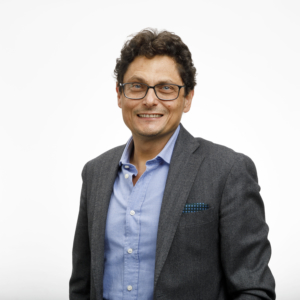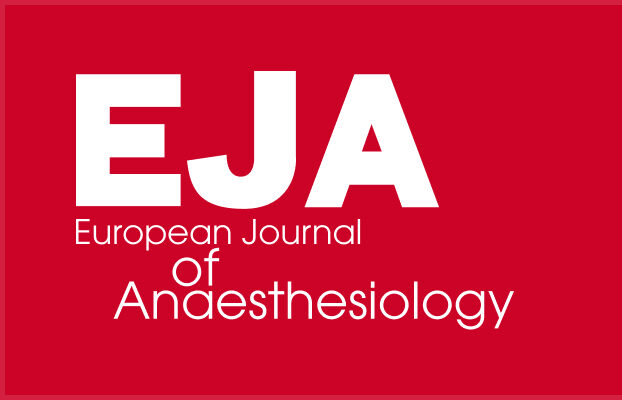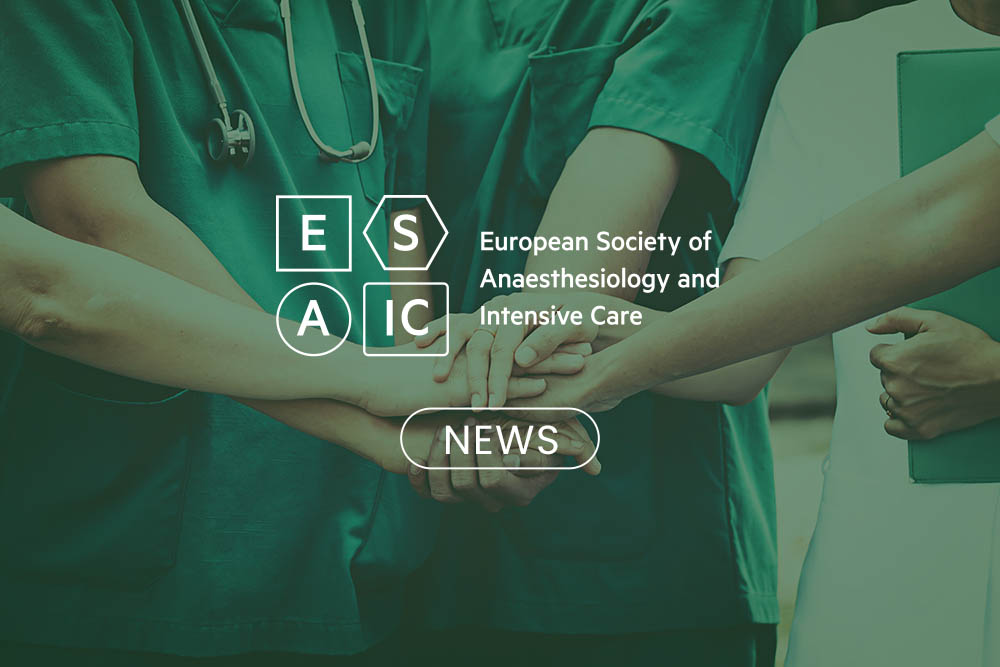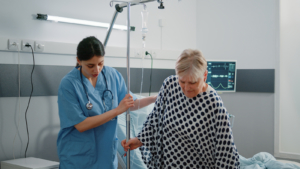Congress Newsletter 2022
Welcome to EA22 - ESAIC President Edoardo De Robertis
 In January of this year, Prof Edoardo De Robertis, Director of Anaesthesia and Intensive Care at the University of Perugia, Italy, became the President of ESAIC, taking over from Professor Kai Zacharowski. On behalf of the entire Executive Committee and ESAIC staff, he is wishing the warmest of welcomes to all our delegates, both those joining us in person in Milan and also on our virtual platform.
In January of this year, Prof Edoardo De Robertis, Director of Anaesthesia and Intensive Care at the University of Perugia, Italy, became the President of ESAIC, taking over from Professor Kai Zacharowski. On behalf of the entire Executive Committee and ESAIC staff, he is wishing the warmest of welcomes to all our delegates, both those joining us in person in Milan and also on our virtual platform.
Q: Edoardo – it’s so good to be back in person for Euroanaesthesia 2022! Tell us how you are feeling about returning to in-person meetings?
A: Excited! It is a joy to have the opportunity to see again face to face so many friends and colleagues. This gives us force and inspiration. Still, the enthusiasm and happiness have been shaded by the international situation and saddening news of the deep suffering of so many colleagues, which remain in our hearts and constant thoughts.
What I have seen in the last months has given me food for thought on the importance of our community, which brings together like-minded people who are headed for the same goals. After 2 years of the pandemic that has only physically kept us apart, but more than ever linked us with a strong bond of commitment to fighting COVID in our hospitals and intensive care units, we finally have the pleasure to meet again. Being part of an engaging community gives us a sense of belonging, which improves motivation, ability to learn, and sense of pride in who we are and what we do daily to offer our patients the best and safest health care.
Q: Of course, the pandemic has not disappeared altogether – but tell us, how are things in Italy – are the Italian people, who suffered so badly at the beginning, now very optimistic about the future once again?
A: I think Italians, as well as all European and worldwide citizens, are well aware that COVID still exists and that we can not yet consider the pandemic as a bad page of history. For necessity, there is a general acceptance to live with COVID, coming back to a normal life, and normal relationships. The Italians are pragmatic and a bit fatalistic, we have always faced with great fortitude all calamity, and we are optimistic by nature. So, coming to your question, yes I think there is a sense of optimism.
Q: This year’s Euroanaesthesia brings, as we would expect, some exciting new projects such as the ‘Serious Games’ workshops, as well as previously popular sessions such as the SIMLAB and ultrasound workshops. How important are sessions like this, where our delegates can get hands-on practice of everyday crisis situations?
A: I believe the format of our congresses require continuing development. I have asked the Board to start the exercise to figure out new models for congresses in the future. Today ESAIC offers a robust educational and scientific program all around the year, which covers all fields of our complex and large discipline, which include anaesthesia, perioperative medicine, intensive care medicine, pain medicine and critical emergency medicine. All fields are in rapid evolution, especially from a technological point of view. Many techniques have been implemented and need to be diffused. Colleagues not only need to be updated with the last research but need to easily learn to apply at the bedside the literature novelties, and the innovations of our profession. Over the last years, we have already seen our congresses highly appreciated by the younger generation, by our trainees. They need to be helped in the development of their knowledge and skills not only with a formal way of exchange of knowledge but by using what technology offers us. We are entering the era of the metaverse, and we have to figure out how to apply this possibility to the already well-established teaching with simulation.
Q: Your own career has seen you work for a long spell in Naples, at the University Federico II, and also the last four years at the University of Perugia, where you are the director of the Department of Anaesthesia and ICM at the University Hospital and the director of the training program in Anaesthesia, Intensive Care, and Pain Medicine. And as such, your experience touches on all the specialities that ESAIC represents (and partly why the society changed its name). How important do you think it is for trainee anaesthesiologists today to experience all of these disciplines?
A: Anaesthesiology if a wonderful profession. Tough, yes! you need to be a hard worker, too often not under the spotlight. But we are near our patients when they are fragile, exposed. In the worst and most painful moment of their life. We are like the guardian angels of the patients. These bring us enormous rewards. Last year we celebrated the 175th anniversary of the first ether anaesthesia. To celebrate it we have broadcasted a video that highlights our profession and our passionate clinical role. I constantly repeat to my trainees the necessity to gain experience in all fields of our profession. It is normal that each of us will be more expert in a specific field, but will always remain ready to be quickly converted to other tasks. We are resilient and plastic. That’s why we have responded so well to the pandemic challenges. The essence of our background and daily clinical challenges are the deep reasons that have spurred on the change of the name of the society. Maybe change is not the right word – but rather adapt our society’s name to what we really are and do every day.
Q: You have told us before of your amazing experiences training and carrying out research with Prof. Bjorn Jonson, one of the fathers of modern mechanical ventilation. Studies you took part in include those developing a method for the aspiration and replacement of dead space (ASPIDS), and researching these techniques in critically ill patients.
As such, mechanical ventilation has always been your ‘research love’. But was it quite surreal for you when, as the COVID pandemic took hold, we were seeing mechanical ventilation in the ‘regular’ news headlines every single day? Has the pandemic really strengthened our understanding of mechanical ventilation?
A: As mentioned above, we are not used to being under the spotlight. COVID brought the anaesthesiologists under new lights in the mass media, as well as techniques of ventilation we have always used. I do not think that pandemic has strengthened our understanding of mechanical ventilation. For sure we have learned a lot, but I think the major step has been to diffuse the use of techniques, such as non-invasive ventilation approaches or high flow oxygenation in clinical settings not used to such supportive assistance.
Q: You have also become interested more recently in the fields of obstetrics and massive bleeding. Tell us a little bit about these.
A: Another area where the clock runs very fast and in which young, often healthy, women can be abruptly exposed to critical conditions. In my career, I had the chance to be involved in several fields of our profession, such as intensive care or obstetric anaesthesia, united by the care of patients in critical, time-dependent settings. Obstetric anaesthesia is thrilling and exciting, and in my opinion, my intensive care background has helped a lot.
Q: Many of our trainee anaesthesiologists (and also those much more experienced) have been under a huge amount of pressure across the pandemic. What is your message to them now that we are coming out of this crisis, and we can look forward to brighter times?
A: I have not enough words to thank my trainees of Perugia and with them all trainees in Italy and Europe. They have been exposed with us to an unprecedented health care crisis. We have learned together how to treat COVID, none of them has stepped back and each has offered great help in a moment of workforce shortage. They will remain the COVID generation! They will bring with them during their future professional life the incredible experiences of those days. If in their training they have lost some aspects of our complex profession, concentrating for many months on just one patient typology, they have matured their “being an anaesthesiologist” much more than the previous and future generations of trainees.
Q: Of course, it is hard for the President to get to many sessions – you are a busy man! But what in the program has caught your eye – and maybe you can watch it again on the online platform?
A: All the congress sessions! the scientific program is so rich, and as you have outlined I have to jump from one business meeting to another, preventing me to enjoy the scientific aspect. But I will go on the online platform to pick the sessions close to my interests to have the chance to update the outstanding experts that have finally gathered in person in Milan.
Thanks, Edoardo and enjoy Euroanaesthesia 2022 – your first one as President.
Read More of our special newsletter covering our congress.










